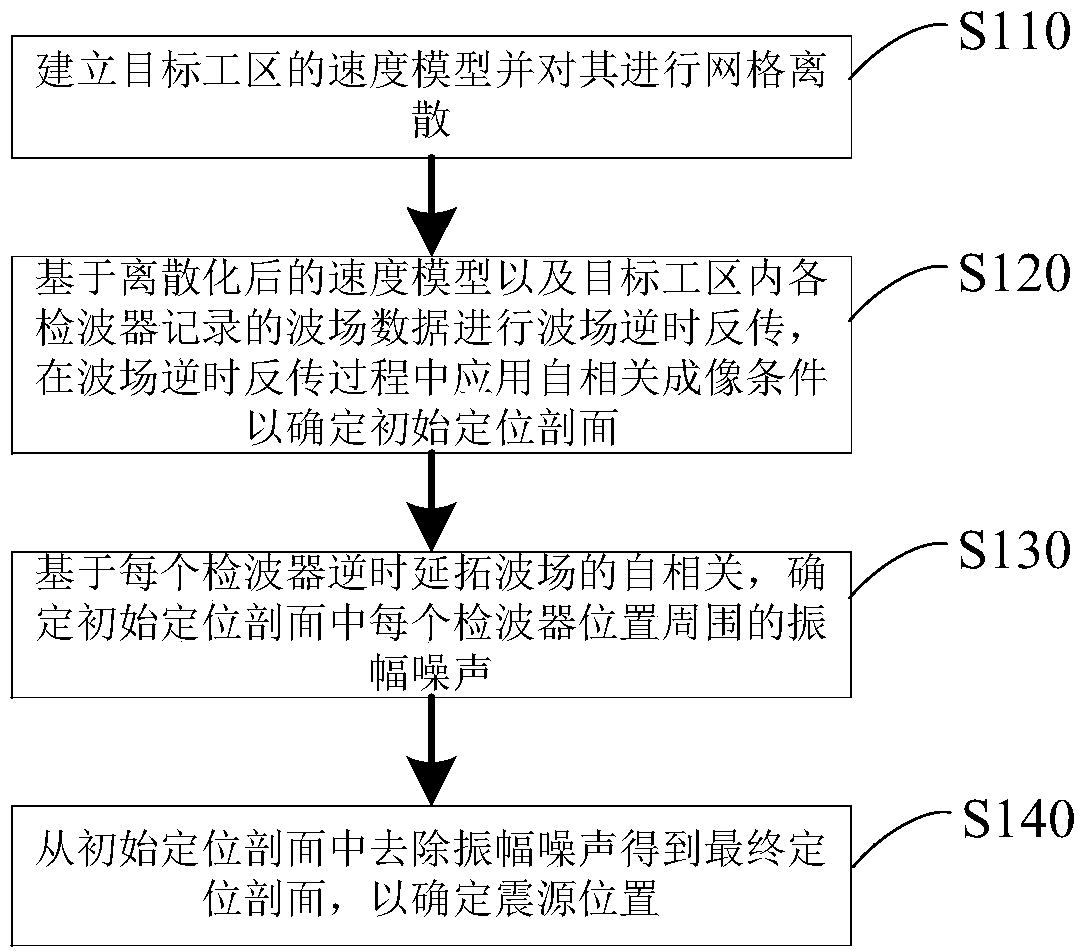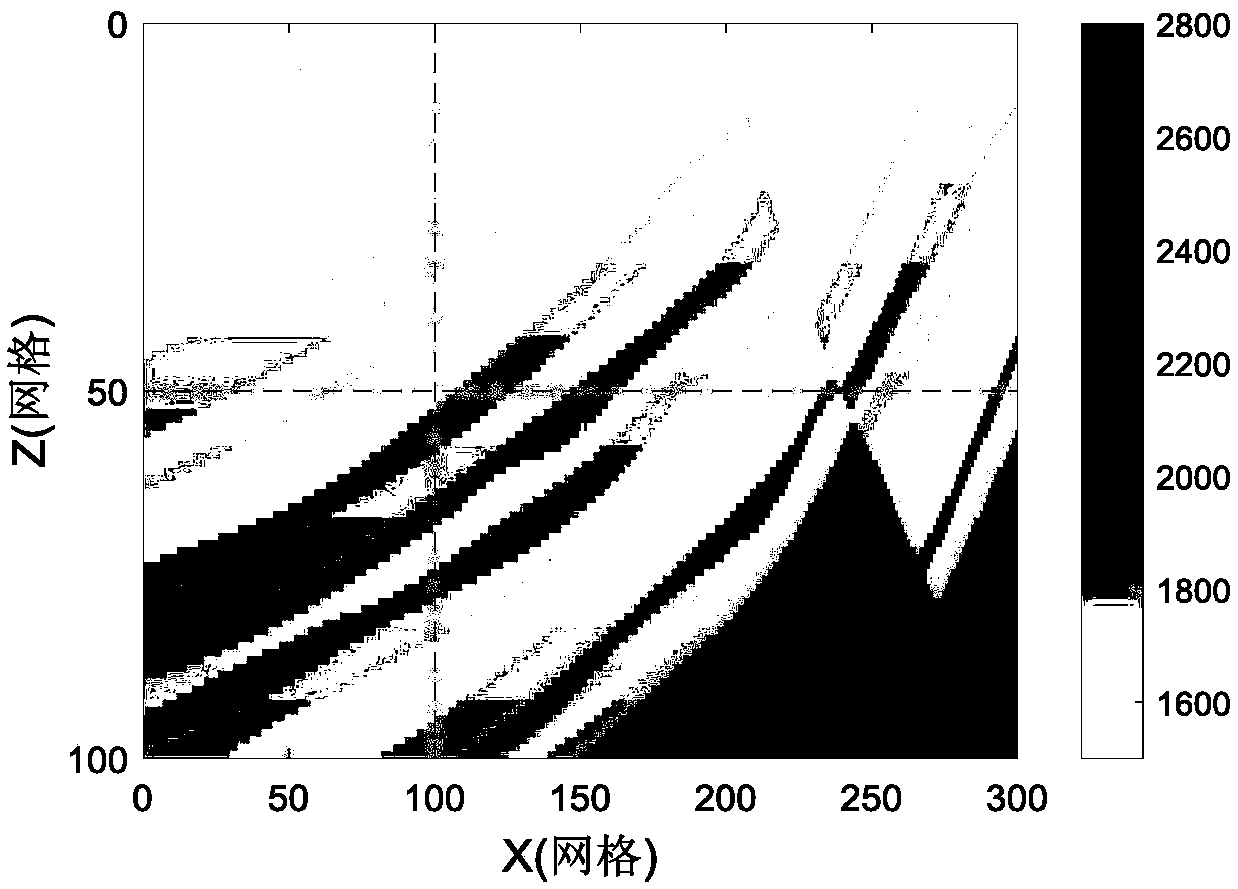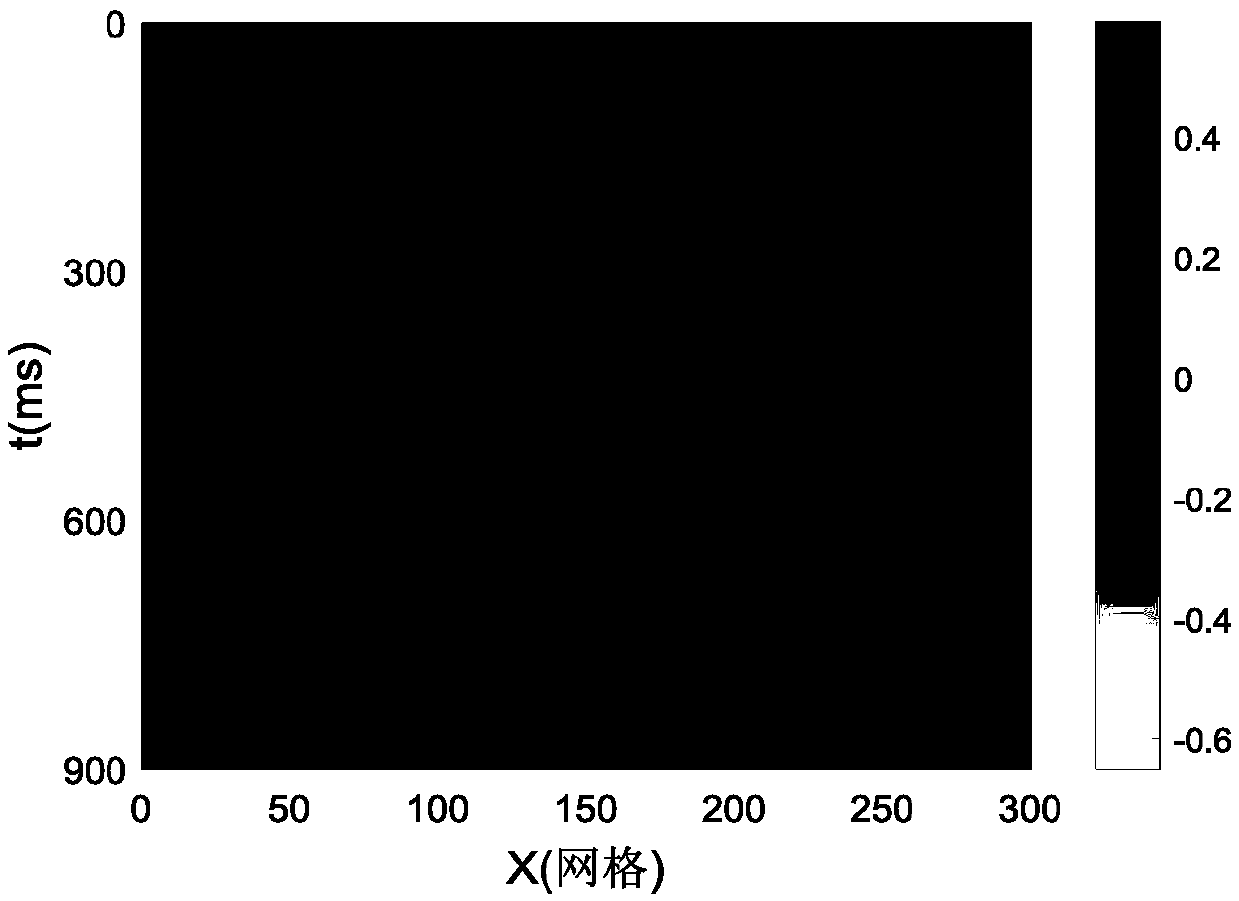Improved seismic source reverse time positioning method and computer readable storage medium
A positioning method and time-reverse technology, applied in the field of seismic exploration, can solve problems such as weak noise resistance and limited positioning accuracy, and achieve the effects of reducing background noise, improving positioning accuracy, and reducing positioning artifacts
- Summary
- Abstract
- Description
- Claims
- Application Information
AI Technical Summary
Problems solved by technology
Method used
Image
Examples
Embodiment 1
[0079] First, establish the velocity model of the target work area, and mesh the established velocity model (grid discretization)
[0080] Such as figure 2 Shown is the velocity model established in this embodiment. When the speed model is networked, the grid size is 301*101, the grid spacing is 4m, the sampling interval is 0.3ms, and the record length is 0.9s. And 301 geophones are arranged along the surface of the target work area, with a receiving distance of 4m.
[0081] The source of the vibration is the Lake wavelet with a main frequency of 40Hz. Place the seismic source at the (100,50) grid for excitation, and the surface reception records are as follows image 3 As shown (in order to be close to reality, Gaussian random noise is added, SNR=0.5).
[0082] Afterwards, through the method of step S120 above, the initial positioning profile of the conventional autocorrelation imaging conditions obtained is as follows: Figure 4 As shown in , it can be seen that the lo...
Embodiment 2
[0090] In embodiment two, also adopt figure 1 The speed model shown is different in that the geophones in the target work area are distributed on the surface of the target work area with a large spacing (sparse distribution).
[0091] Specifically, in this embodiment, seven surface geophones with a distance of 200 m are used to perform reverse time positioning. The signal-to-noise ratio is 1, and the surface reception record is as follows Figure 9 shown.
[0092] In this example, Figure 10 It is the positioning profile of conventional autocorrelation imaging conditions. It can be seen that in the case of sparsely distributed geophones, conventional autocorrelation imaging conditions have strong amplitude noise around the geophone position, polluting the entire positioning profile.
[0093] Figure 11 In order to improve the positioning profile of autocorrelation imaging conditions, the strong amplitude noise of the shallow surface is eliminated, and the seismic source is...
PUM
 Login to View More
Login to View More Abstract
Description
Claims
Application Information
 Login to View More
Login to View More - R&D
- Intellectual Property
- Life Sciences
- Materials
- Tech Scout
- Unparalleled Data Quality
- Higher Quality Content
- 60% Fewer Hallucinations
Browse by: Latest US Patents, China's latest patents, Technical Efficacy Thesaurus, Application Domain, Technology Topic, Popular Technical Reports.
© 2025 PatSnap. All rights reserved.Legal|Privacy policy|Modern Slavery Act Transparency Statement|Sitemap|About US| Contact US: help@patsnap.com



